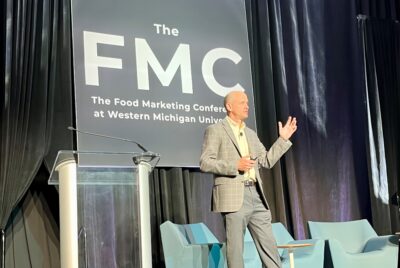Consumers are savvier than ever when it comes to getting the products they want at the best price. More and more shoppers are deal-seeking and switching to find better overall value, but they’re also looking for innovative and high-quality products at affordable price points.
It’s prime time for private brands.
At a time when consumer perception of grocery prices remains high, leading retailers are paying attention and expanding their focus on the private-brand segment. Already this year alone, Walmart launched bettergoods, its new line of “elevated, chef-inspired food” with more than 300 items, many priced under $5, while Target expanded and redesigned its up&up brand of household goods and personal care items, adding hundreds of new products and reformulating 40% of existing products to meet new, higher-quality standards.
Kroger, meanwhile, debuted its reformulated Home Chef and Private Selection fresh deli and bakery brands in January. And while Amazon made headlines last year by slashing its overall private brand presence, the retail giant continues to expand its grocery focus with its Whole Foods brands both in-store and on the Amazon site.
It’s a veritable private-brand palooza out there, and that’s not even counting the thousands of new items coming out of other large and mid-size chains every year.
And as retailers continue to spar in an intensifying battle for foot traffic, a strong private-brand program is proving a key differentiator.
“With consumers’ desire for more premium product attributes without premium budgets, we’re seeing retailers and brands execute to better meet consumer demand, often leveraging their own private brands as an avenue of innovation and opportunity to deliver the overall value and accessibility shoppers seek,” says Michael Taylor, COO of Retailer Services at Advantage Solutions.
Taylor, who leads the business unit that includes Daymon, the leading private brand agency that partners with retailers to create and expand private-brand lines, says retailers in all channels not focused on creating a robust private-brand strategy are in danger of being left behind.
And it’s not as simple as slapping a generic label on a can of beans and undercutting national brands on price. Increasingly, private-brand strategies go beyond value proposition and can include everything from exciting flavor innovations and creating better-for-you and other lifestyle-friendly products to revamping design and packaging and reaching younger customers where they live — which often means social media and platforms such as TikTok.
Driving interest in private brands
The recently released Q2 Advantage Outlook found that more than 70% of retailers say adding new items to their private-brand mix is part of their growth strategy over the next six months.
And consumers are all in. An overwhelming majority of shoppers (94%) view private brands as just as good or better than national brands in offering products that fit their lifestyles, according to Daymon research.
One of the key factors behind the surge in private brands is a changing consumer base, Taylor says.
Younger generations are among the most diverse ever and often celebrate distinct cultural influences and global cuisine. On top of that, they have been raised on social media networks like TikTok and Instagram, and are very much aware of food culture, innovative recipes, how-to cooking videos and other premium culinary interests — particularly new and exotic flavors.
“As consumers shift overall expectations, retailer brands that lean into bold and dynamic flavor assortments excite shoppers with newness, drive seasonality or limited-time offerings and spark trial and impulsivity,” Taylor says. “This is also a way for the industry to infuse more premium flavors and loyalty-inducing exclusivity.”
And don’t underestimate the value of package design, which can add a fresh, upscale aura to a budget-friendly product. Consumers — particularly younger generations — increasingly expect the design, trends, functionality and shareability of the products they purchase to be in line with their lifestyles and heightened expectations. Also, product packaging that taps into the cultural zeitgeist — think Barbie pink in 2023 — resonates with these younger shoppers.
“Many products within each category often opt for a similar look that consumers come to expect,” Taylor points out. “Design that departs from that usual look creates contrast on shelf, adding value and interest for shoppers.”
Successful product design goes beyond colors, logos and package appearance and includes label claims and nutritional information that are selling points to today’s consumers, who are more focused on better-for-you products or lifestyle choices that include everything from plant-based to all-natural, organic and more.
For instance, Walmart’s new bettergoods line is grouped into three pillars — culinary experiences, plant-based and “made without” foods that cater to different diet and lifestyle preferences — that signify an elevated or better-for-you product that appeals to consumers.
Building a strategy
Before creating or expanding a private brand, retailers need to do their homework, advises Jean Ryan, Daymon’s vice president of operations. That begins with a true program strategy.
“You need to have a strong definition of your product,” she says. “Everything from flavor to packaging design to execution needs to be clear.”
That strategy also includes sourcing and quality assurance. “Retailers need strong supplier partnerships to establish a pipeline for product development that meets their innovation and quality assurance standards,” Ryan says. “It’s all about creating a positive customer experience with the program, delivering on their expectations and inviting them to come back for more.”
Consumers are, indeed, coming back for more. U.S. private brand sales reached $236.3 billion in 2023, up 4.7% from 2022, according to data from the Private Label Manufacturers Association and Circana.
And with private brand unit share hitting a new record of 20.7% last year, it’s showing no signs of slowing down.




